Update: First order of business - SparkFun will be closed December 31st in observance of New Year's. Get the champagne and confetti ready!
It's been a good great year at SparkFun. Back in January, we had our first Free Day (and will be revisiting that concept in a couple weeks), grew tremendously, added weekly videos to the product post, and introduced a lot of new products. This product post will be the last of 2010, but don't fear, there's going to be tons of new stuff in 2011.
Now that we have that out of the way, let's look at the video for this week.
Enthralling. OK, let's see the last batch of products for 2010.
The IMU 3000 is a very interesting IC. It allows you to add an external accelerometer and 'fuse' the output with the IMU 3000's own 3-axis gyro to give you 6 degrees of freedom straight out of its own I2C output. Technology, don't you love it? The Digital IMU Breakout is a simple breakout for the IMU 3000 IC. Add your own accelerometer, or just read on...
So, you want to use the IMU 3000 but don't want to add your own accelerometer? Well, this combo board combines the IMU 3000 with an ADXL345 and some other components to give you a full 6-axis solution for all your measurement needs.
Tilt sensors are pretty useful for basic orientation sensing. This basic tilt sensor can do just that for your next project. You could make an electronic mug that when tipped over, it triggers an alarm, and then shorts itself out. Bad project, but you get the idea.
In addition to the basic tilt sensor above, we also have a 4-way tilt sensor that's a bit fancier. It uses infrared receivers internally that can detect the orientation in four directions. These come in handy if you are looking to detect multiple orientations, like making a really epic electronic Rubik's Cube or something.
Alligator clips always come in handy, and it's nice to have a few on hand on your workbench and we have three new ones. We have a small toothless one, one with crocodile jaws, and one that looks like the little alien mouth from the movie Alien. All three are rated at 5 amps and have methods for strain relief, so you can use them with just about anything.
Super capacitors are basically normal capacitors that have been dipped in radioactive sludge, thus giving them super powers. Well, not really. Super caps are capacitors with unusually high energy density, allowing them to be used as backup batteries, solar energy storage and such. This surface mount 0.2F/3.3V super cap can keep a low-powered project running for quite a while.
That's all of the products for this week/year. However, on one last final note, many of our customers have expressed an interest in working for SparkFun. You just may be in luck because we have a new job opening. I am looking for an assistant that will help with general catalog maintenance including sale items, new products, descriptions, etc. The full job description can be found here. In addition to the normal application, we have a bit of a quiz for you to complete in order to apply for the job. Intrigued? Good! Check out our job postings for more information.
See you next year!
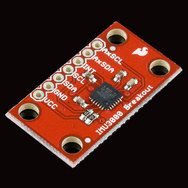
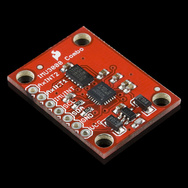
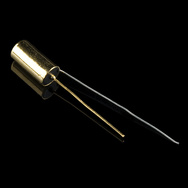
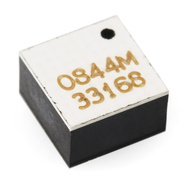
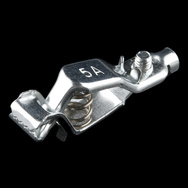
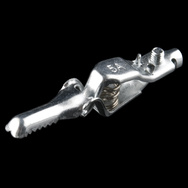
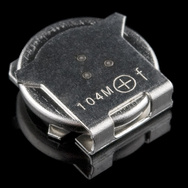
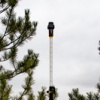
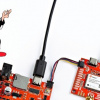
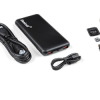
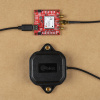






Think I found a good 16 things to fix in that silly page. Alas, I'm quite happy here in San Jose, CA.
You should run a little contest for people. Whoever gets all the items correct gets entered into a lotto to win a $5 gift card or something. :-)
-- Ian
Thursday New Product Post > New York New Years Eve Ball Drop
I understand the addiction to .1 header pins; however it would be great if these I2C boards had a standard I2C plug option (in addition to .1 headers). Indeed if they had just a footprint for an In and Out 4 pin connector, they could be daisy-chained with standard I2C jumper cables.
"Standard" I2C plug? As far as I know there is no mechanical standard for I2C.
Are employees allowed to participate in FreeDay?
nope. why would we want to? it's your free stuff, not ours.
pls i want the details about xbee pro2 urgently....anybody pls tell
You can find information here.
pls any body can tell xbee pro can work for 200 m range
The effective radio range you will get depends on many variables. And there are several XBEE PRO models that have different operating frequencies and power levels. On a good day, using the SFE #WRL-09086 radios with reasonably good antennas where there's a clear line of sight between the radios, you could probably get a 200M communication range. But as soon as you try to punch through walls, buildings, trees, or other obstacles, the effective radio range drops quickly. Other factors that can cause range reduction are temperature and humidity conditions. When you see "15 mile range", that's really only achievable under ideal conditions with an absolutely clear line of sight using high gain antennas that are pointed directly at each other. Using the WRL-09086 radios with the small "duck" style antennas indoors and going through several walls I get reliable communication range of about 30M (the number of walls is much more of a factor than the distance). And when I say "reliable" that means practically all the radio messages make it on the first try; the effective range can be increased by using an error correction mechanism at the cost of additional complexity and a lower effective communication rate.
That dolphin-mouth-type-thing croc clip might make a handy heat shunt for soldering heat sensitive through-hole components.
I think I found all the errors in that product description. :)
Want a job?
I am pretty comfortable as a grad student, believe it or not. ;)
wii mote contains acelerometer, gyro, bluetooth and a screen for detecting the led bar, anyone knows the models of this chips?.
Hello RobertC,
I see you have a cool looking soldering iron to your right. What is the make and model? I am looking to make a work area and will be looking for a soldering iron/ rework station.
Thanks,
Alan
Hakko FX-951... fantastic piece of machinery. We use them down here in production.
We use the Hakko solder stations where I work too. It seems like a great solder station except for one annoying aspect: The blue key that you have to insert and remove to change the temperature. If you lose the key then you're screwed. Plus its a pain to fiddle with every time.
I never understood why Hakko built it that way. Maybe someone can enlighten me.
It's not to prevent coworker pranks; it's to prevent people from changing the temperature in a production setting.
Some regulations govern soldering processes, and it's in a manufacturers' best interest to make sure the workers use the ideal temperature. A tech might be able to improve their parts-per-hour by increasing the temperature, but not know that their actions are causing weak solder joints! Or worse, they might know the danger and maliciously change the temp.
We use Pace Heat Wise irons where I work; you have to plug in a certain color-coded 'Power Module' temperature key, so a manager can tell at a glance what temp the techs are using. Similar idea.
It's funny that Sparkfun employees are more worried about practical jokes.
The point is that it allows you to tightly control the temperature of your iron and can control who has access to that temperature.
It is to prevent a friendly co-worker from playing a silly prank on you and turn your heat down to 165 degrees. We just keep all ours attached to the cord.
Yeah - thats what we did too. Just zip tied the key to the cord so it wouldnt get lost.
Yeah, I rarely change the temp on mine and keep the blue card in my desk drawer (don't get any ideas TJ...). But it is one fine iron.
its a Hakko station. very nice